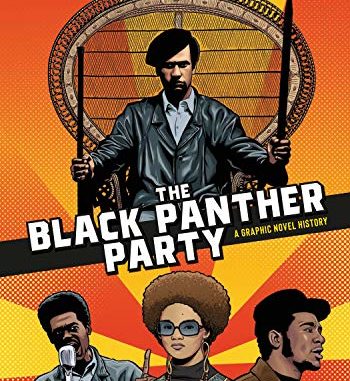
An organization created by Black men Huey P. Newton and Bobby Seale began in California in 1966. Called The Black Panther Party for Self-Defense, the last part was eventually dropped. But the principles of the party struggled to stay in place for the years of its existence. Written by David F. Walker and artwork from illustrator Marcus Kwame Anderson this graphic novel has created a history long hidden from the mainstream biographies of the men and women who were key figures and members of The Black Panther Party. As Walker’s narrative delves into the history before the Panthers, their infancy, then to their final collapse Anderson brings these historical, seemingly far-removed figures by transforming them into real, relatable people. From freedom to peace, the ability to live Black without fear feels like a fever-dream. What occurs in Walker and Anderson’s ‘The Black Panther Party: A Graphic Novel’ is the past of possibilities and tragedies in vivid striking color.
History can lie. In black and white photographs or news footage belies a time far removed from today. However, Anderson’s artwork tells the reader the truth. The Black Panther Party being formed approximately 55 years ago, its youngest member Bobby Hutton was 16, who wouldn’t even be 75 years old today reflects the reality that has been obscured and maligned, much in the way Walker describes the treatment of the Panther organization. Every scene is bold and vibrant, and what should be appreciated are the small passages in tangent with the well-researched historical moments. When Seale and Newton, the founding members are in a car discussing ‘The Little Red Book’ from Mao Tse-Tung, as Newton is showing the book you see the palm of his hand. The lightness of it in comparison to Newton’s skin-tone, the shadows that mimic both Black men in the car shows realism as well as giving the narrative a sense of movement.
Additionally, what the reader takes away from this narrative is a wealth of information that will anger you. Knowledgeable in the law Newton said, ‘Why pass new laws when no one is doing anything about the laws that already exist?’ It’s what the Panthers would do, exploit laws that already existed and created schools and programs that spread throughout several cities in the U.S. Successful systems that were in place consisted of the breakfast programs and schools from elementary to middle grades. Among those were influenced by the Panther Party were AIM, the American Indian Movement to Aborigines in Australia formed coalitions and adopted policies to help aid their respective communities. Those who were disenfranchised were drawn to and found a way to incorporate the philosophy and some of the actions initially created by Newton and Seale. A plan that could have worked to revolutionize the civil rights movement was undermined by the American government.
The U.S. has been plagued with the inequality. Still, in its history Walker and particularly Anderson shows you honesty without performative trauma. It seems to be a purposeful choice when Walker discusses as Anderson illustrates Emmet Till. He’s not shown in the bloated, mutilated form done by his murderers, rather as a young teenager looking hopeful with dreams in his eyes. Then there’s the little-known supreme court ruling of how Irene Morgan was instrumental in the 1944 decision of segregation on interstate buses as being unconstitutional.
So much of The Black Panther Party: A Graphic Novel is necessary and revealing in its storytelling. It’s not just Black history, it’s American history.

Leave a Reply